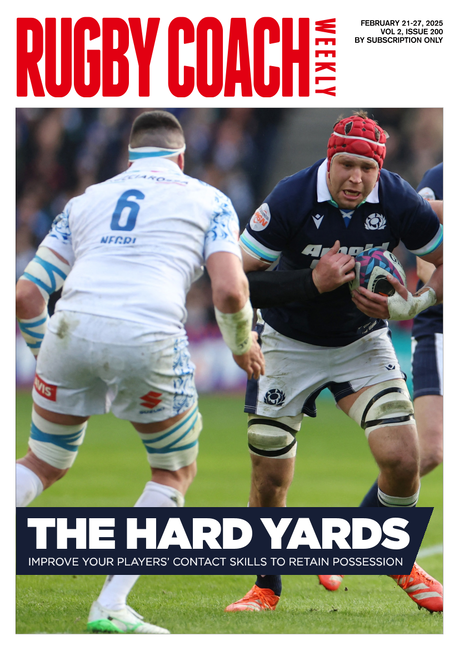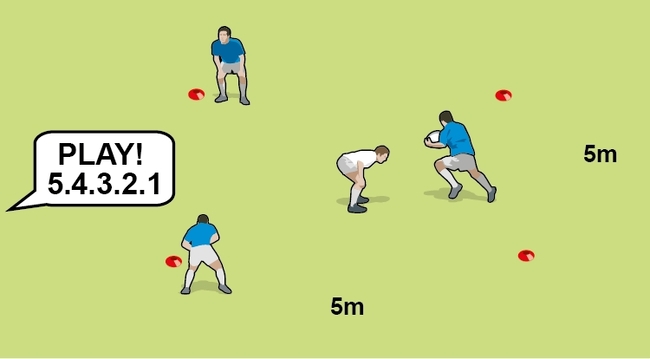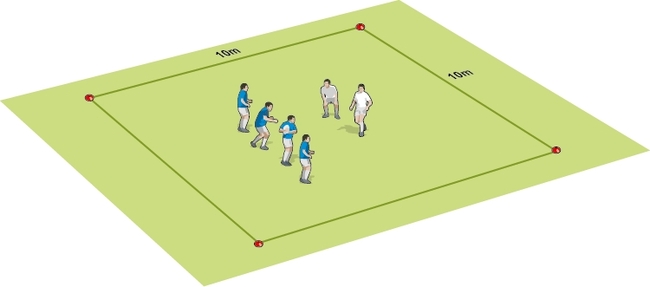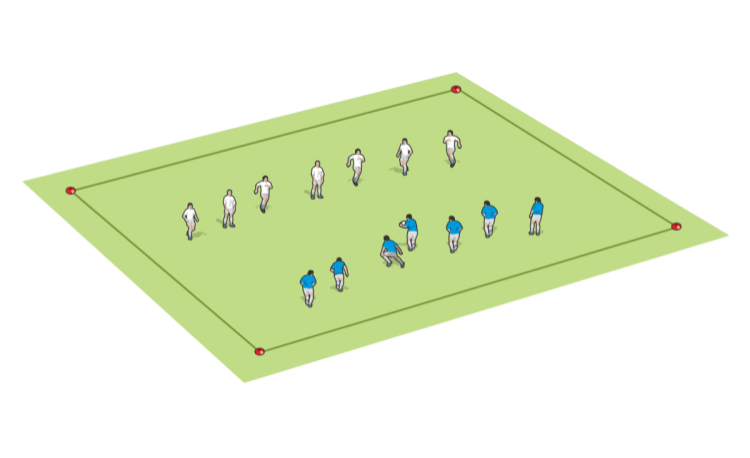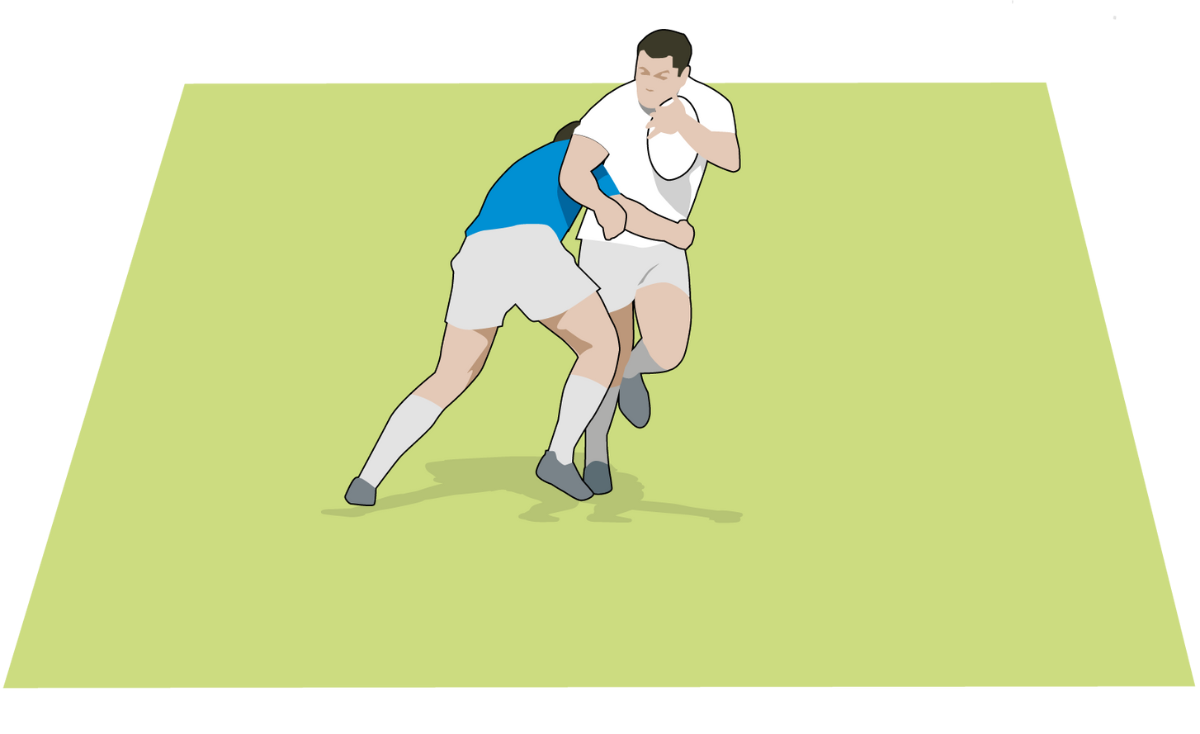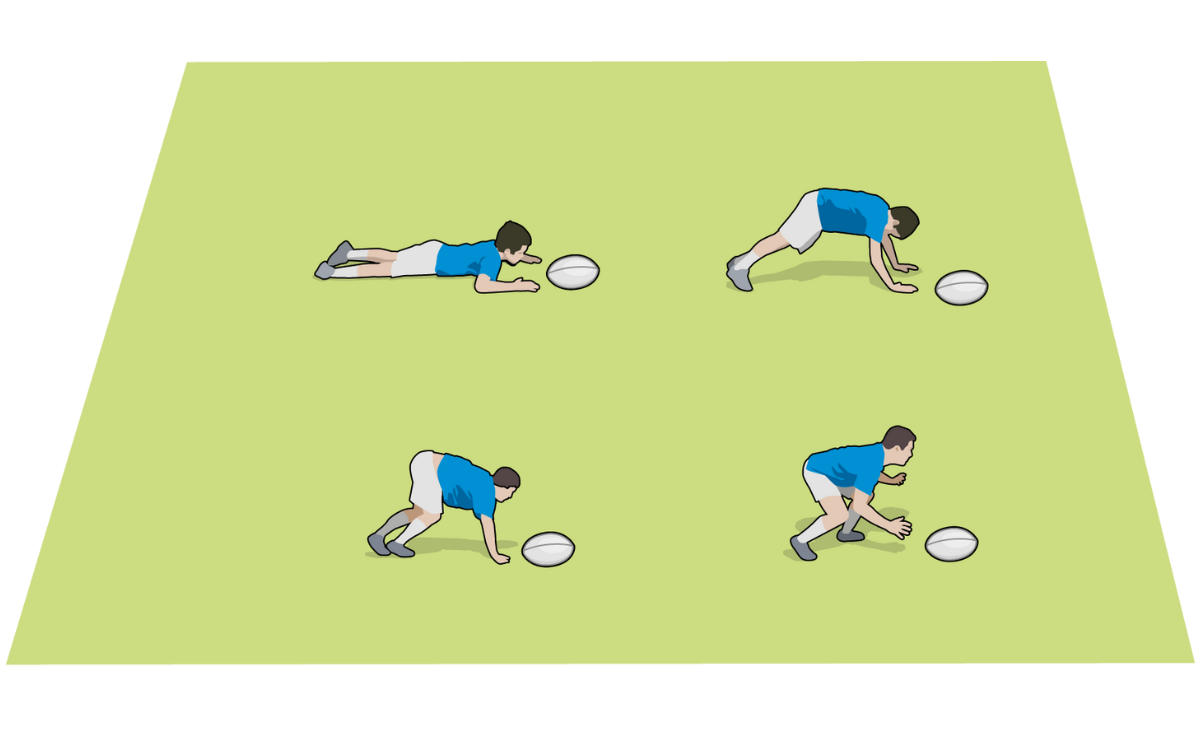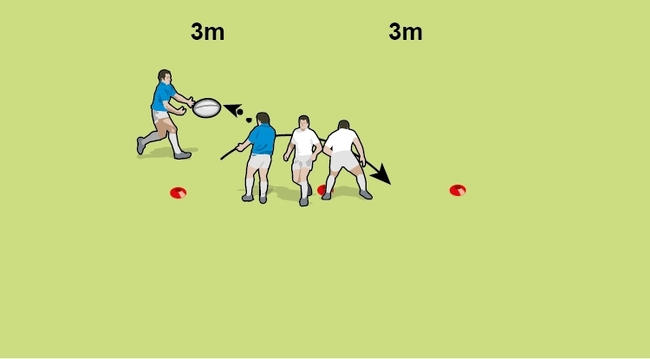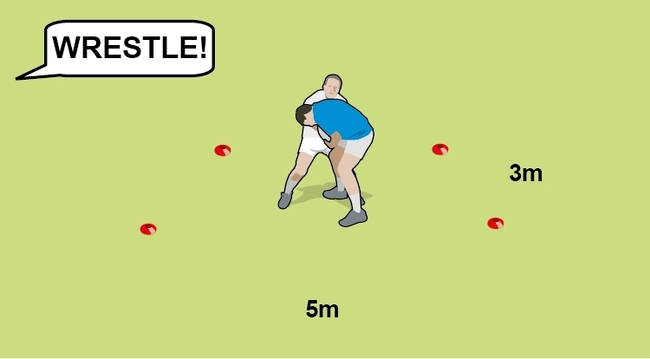Better kickers using rugby rounders
Develop rugby rounders into a skills development game specifically aimed at improving kicking techniques and tactics. While there are also good outcomes for catching and passing, I want to focus on the precision of the connection between ball and boot and then finding space with the kick.
THE GAME
- Set up as above.
- One team will take the role of the batters and the other team will become the fielders.
- The batting team will take it in terms to strike the ball, aiming to find clear grass and then make their way around the bases.
- They have two attempts to make sure it lands inside the playing area.
- The fielding team must either catch the ball or return it to a base before the batter gets there to get them out.
- If the batter makes it through all the bases then they score a run for their team.
- The batting team continues until there have been three outs before swapping over roles.
COACHING THE GAME
It is easiest to start this game with the kickers practising their end-over-end punts. This is the most common kick used in the game of rugby, usually being showcased when aiming for touch or field position, putting chip kicks over a defence, in crossfield kicks and in high contestable kicks.
Working with the needs of your players, you could also play this game whilst looking at spiral punts, box kicks, grubber kicks, drop kicks or kicking from a tee.
I would adapt some rules of the game based on the type of kick you are practising. For instance, if you were wanting to deal with high, hanging drop kicks; you may remove the fielder’s ability to catch the batter out. This rule change would reward a kicker for achieving more hang time on the ball.
You may also decide that a fielder is only allowed to kick the ball back a certain way, or that they must pass the ball back to base to test other skills.
You could progress this game by adding more players to the fielding team, giving the batter limited time to strike the ball or having a player pass the ball to the batter (with a defender charging them down if you wanted to really challenge the players).
You could also challenge the fielders by limiting their numbers, making the pitch bigger or by restricting the methods in which they can return the ball.
COACHING THE DETAIL
The role of the lead coach (or kicking coach)
Have a template of what a good kick should look like so that there’s precise observation and accurate feedback.
For example, look at this video from Dave Alred.
There is no perfect kicking technique, and whilst there are some core principles of kicking that should be followed, the player should have freedom to explore what works best for them.
You are initially looking at the technical ability of the kicking player. It’s best to be situated head on to the kicker, being able to see the ball drop, the player’s head and chest position, balance shift, plant foot and the kicking foot.
Your observation skills will be tested during the kick to spot technical imbalances or imperfections that need work. Focus on the most important areas for feedback – don’t overload the kicker with information as they are more likely to improve by focusing on one or two aspects at a time.
This game works best after spending some time with the kickers beforehand, gaining an idea into their strengths and weaknesses around the kick; by doing this, you can precisely concentrate and identify the likely areas of improvement.
Feedback can be given on the move, straight after the kick or when the kicker has got to base. Feedback could also be given once the kicker has completed their innings.
The most important thing here is that feedback is accurate, relatable to what you are working on and that the player has understood it. You can test for understanding here by asking the player to demonstrate what you have just discussed away from the game (co-coaches would be a great help here).
If you have moved away from a technical focus and are looking at tactical decision making around the kick, I would position myself behind the kicker to gain the same view as them. This will allow you to follow their head, test what they are seeing and feedback on their scanning skills.
The role of the co-coach
I would place the first co-coach available in the field along with the fielding team. This coach focus’s on the fielders’ skills (high ball catch, passing, kicking whilst moving, scanning and reactions).
You may have agreed before the session that there will be a specific focus when fielding such as high ball catching. If this is the case it is again important that the coach understands the core principles of executing the skill and what will help the player improve them.
The co-coach may also be in charge of energising the fielding team when needed. These sorts of games are supposed to be fun so don’t be afraid to have a laugh whilst undertaking this role. If players are dropping the ball or making poor decisions, don’t let them get too down on themselves. Banter is an underused skill in coaching that can turn a pressured situation into a fun one.
If there is more than one co-coach, I would use them to give one-to-one specific feedback to players when needed. Take them out of the game to work on the skill that needs developing, giving them a few key pointers and a number of repetitions before sending them back into the game.
Newsletter Sign Up
Coaches Testimonials
Subscribe Today
Be a more effective, more successful rugby coach
In a recent survey 89% of subscribers said Rugby Coach Weekly makes them more confident, 91% said Rugby Coach Weekly makes them a more effective coach and 93% said Rugby Coach Weekly makes them more inspired.
Get Weekly Inspiration
All the latest techniques and approaches
Rugby Coach Weekly offers proven and easy to use rugby drills, coaching sessions, practice plans, small-sided games, warm-ups, training tips and advice.
We've been at the cutting edge of rugby coaching since we launched in 2005, creating resources for the grassroots youth coach, following best practice from around the world and insights from the professional game.


